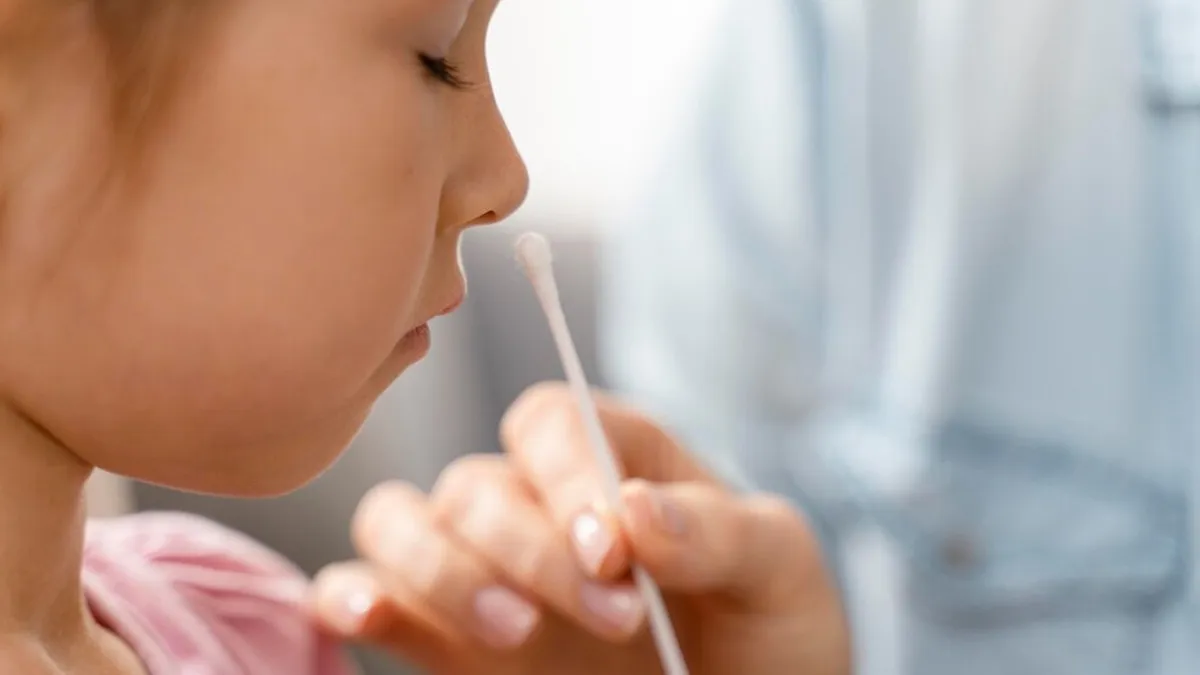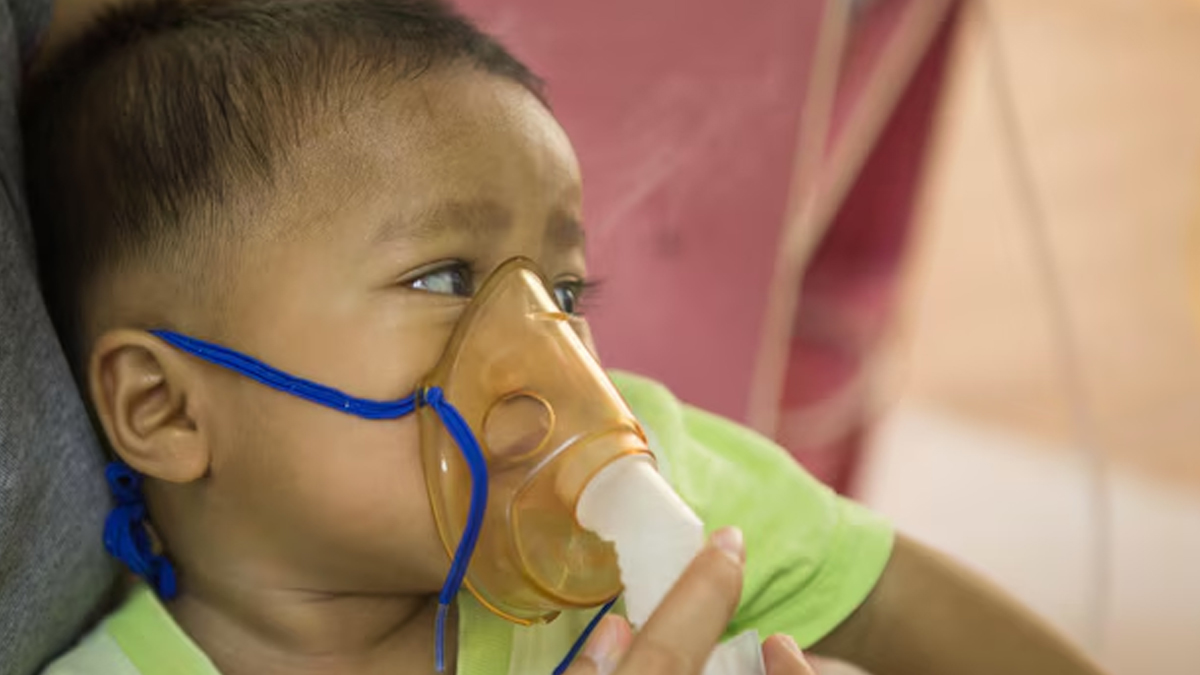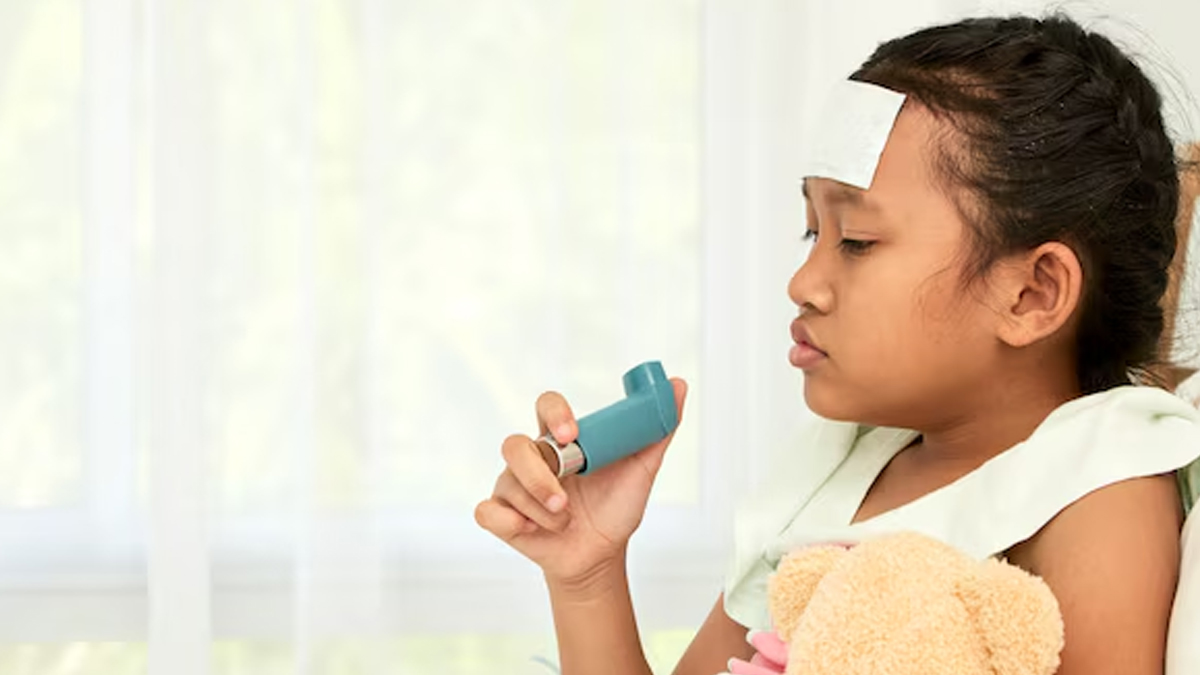
Among children, asthma is the most common chronic disease, ranking among the top 20 conditions worldwide for disability-adjusted life years in children. It is diagnosed through a procedure called spirometry wherein the child has to take a deep breath in, followed by blowing forcefully into the spirometer. Fast and forceful breathing during the test may cause the child to feel exhausted, cough, feel lightheaded or dizzy, and experience pain or tightness in their chest.
Table of Content:-
Additionally, following step-by-step procedures and understanding complex cues can be difficult for little children, which may cause discomfort and makes diagnosis all the more difficult. A new diagnosis method introduced by the University Of Pittsburgh has taken the shape of an easier diagnostic method– nasal swabs. Learn how nasal swabs can aid in the diagnosis of asthma in children.
RELATED: Is Your Child Gulping Down Raw Milk? Paediatrician Shares 3 Major Dangers You Should Know
What Is Paediatric Asthma?

Primary indicators of paediatric asthma include chronic respiratory symptoms such as coughing, wheezing, chest tightness, and shortness of breath, as well as fluctuating expiratory airway restriction. The intensity of airway hyperresponsiveness and inflammation, which range from sporadic symptoms to potentially fatal airway impairment, are other common characteristics.
Childhood is a common time for asthma, which is impacted by both environmental and genetic factors. The majority of kids who wheeze before the age of six will probably no longer experience any symptoms.
Nonetheless, a small percentage of kids may grow up with persistent asthma, usually if they have atopy, a family history of asthma, and ongoing symptoms from an early age. By assessing the severity of symptoms, the chance of an exacerbation, and the probability of chronic asthma, assessment informs treatment choices.
How Can Nasal Swabs Help Diagnose Asthma In Children?

Researchers at the University of Pittsburgh have created a nasal swab test for children that can identify a certain endotype, or subtype, of asthma. For less-studied forms of asthma, this noninvasive method may help doctors prescribe drugs more precisely and open the door for future research into more effective therapies.
The findings, which were published in JAMA on January 2, 2025, are based on information from three separate U.S.-based studies that concentrated on African American and Puerto Rican kids, who had greater rates of asthma and are more likely to pass away from the condition.
Though they are not entirely accurate, these tests enable us to infer if a child has T2-high disease or not. They are also unable to determine whether a child has T17-high or low-low sickness. These two subgroups do not have a clinical sign. The researchers were inspired by this disparity to create more effective methods for enhancing the precision of asthma endotype diagnosis.
Why Is This Important?
-1736913081609.jpg)
Genetic examination of a lung tissue sample obtained during a bronchoscopy, which is performed under general anaesthesia, is typically required for an accurate endotype identification.
Clinicians have been forced to rely on subpar instruments, such as blood immunological indicators, lung function, and whether patients have allergies, because it is impractical and unethical to undertake this invasive surgery on children, especially those with less fatal types of asthma.
RELATED: How To Recognise Early Signs Of Sleep Apnoea In Children, Expert Tips For Parents
How Can Parents Prepare Their Children For This Procedure?
Parents should practically tell their children a story about what to expect from nose swab tests. The hows, whys, when and what of the procedure must be communicated to the little ones in a clear manner. Use neutral language, be truthful with your youngster, and only discuss the facts.
Short scripts and images about COVID-19 testing are also available for use. Additionally, there are short films made specifically for kids. Children feel safer and more at ease during medical procedures when they are in comfort positions rather than being restrained.
It is possible for parents to sit next to their children in the car with their arms wrapped about them if they are at a drive-through testing location. Parents should remain composed above all else, and your child will follow suit.
Also watch this video
How we keep this article up to date:
We work with experts and keep a close eye on the latest in health and wellness. Whenever there is a new research or helpful information, we update our articles with accurate and useful advice.
Current Version